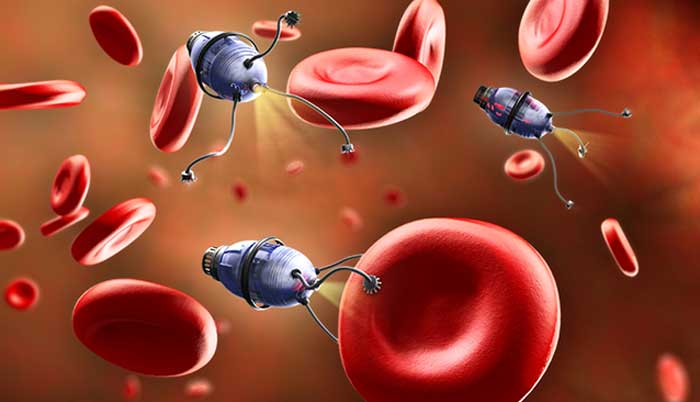![]() Home > Health
Home > Health
Researchers Develop Tiny Robot That Moves Like Caterpillars And Jellyfish, Could Be Used For Medical Treatment Inside The Human Body

![]() February 8th, 2018 | 11:55 AM |
February 8th, 2018 | 11:55 AM | ![]() 1026 views
1026 views
NATURALNEWS.COM
Would you allow your doctor to insert a tiny robot into your body if it meant curing you of one or more of your illnesses? That’s the promise of a newly-developed nanobot made by a group of researchers led by Metin Sitti, the head of the physical intelligence department at the Max Planck Institute for Intelligent Systems in Stuttgart, Germany. The research team’s nanobot is surely tiny, but could play a huge role in the medical field at some point in the future.
According to a report on the prototype nanobot, it measures about 1/7th of an inch long and, at first glance, looks no more than just a small strip of a rubbery material. However, despite its seemingly normal appearance, it’s actually able to move freely – the researchers designed it to be able to “walk” as well as jump, crawl, roll, and even swim. It also has the ability to launch itself out of a pool, effectively moving from one wet environment and onto a dry one.
Although it capabilities are still quite limited, this tiny robot is seen as promising for its potential to be used in delivering drugs to certain specific targets in the body. The researchers, for now, refer to it simply as a “minimalist robot” which is able to achieve “all different type of motion possibilities to navigate in complex environments.”
In a phone interview with the New York Times, the study’s lead author accepted some questions and offered answers in order to share some details about their findings.
When asked about the tiny robot’s composition and how it works, Dr. Sitti said that it’s made out of an elastomer rubber, and that it’s filled with many small magnetic particles. The magnetic properties of the particles have been programmed by the researchers so that it reacts to outside forces, particularly those from an external magnetic field, in order to change its shape to anything the researchers want.
Of its possible uses in the future, Dr. Sitti said that the main plan is to use it inside the bodies of humans to help cure certain diseases. “One of the current major goals is to put this tiny soft robot into our digestive system or urinary system – and in the future, the vascular system – and for it to be able to navigate across all these complex tissues, surfaces which are fully filled with fluids or semi-filled, or no fluids,” he explained. “If you look at the medical devices we have, the smallest ones are catheters, which are a millimeter in diameter, and they are always tethered. So our main goal in making tiny robots is to really access hard-to-reach or even not-possible-to-reach areas in our body with minimal invasion.”
If they could somehow reach their ambitious targets, the researchers are certain that their tiny robot could one day be used to deliver “a cargo” like drugs inside the body. “There are different ways. With a shape change, we can grab the cargo and then deliver it by opening the shape,” said Dr. Sitti. “The second way is we make a small pocket on the robot that only opens with a special shape change that we can control.”
For now, the researchers are working on turning their robot into a fully biodegradable one, so that it can be dissolved by the body with no side effects and no harmful toxicity that can cause any further issues. That’s something that needs to be done early on, before the use of such technology on humans becomes widely accepted, in order to avoid any future problems.
Source:
courtesy of NATURALNEWS
by David Williams
If you have any stories or news that you would like to share with the global online community, please feel free to share it with us by contacting us directly at [email protected]